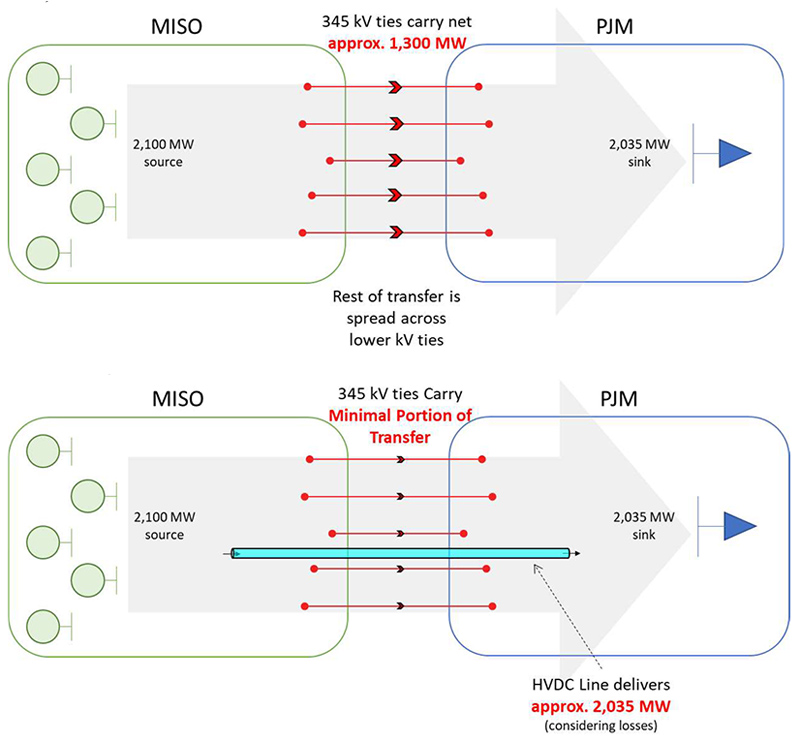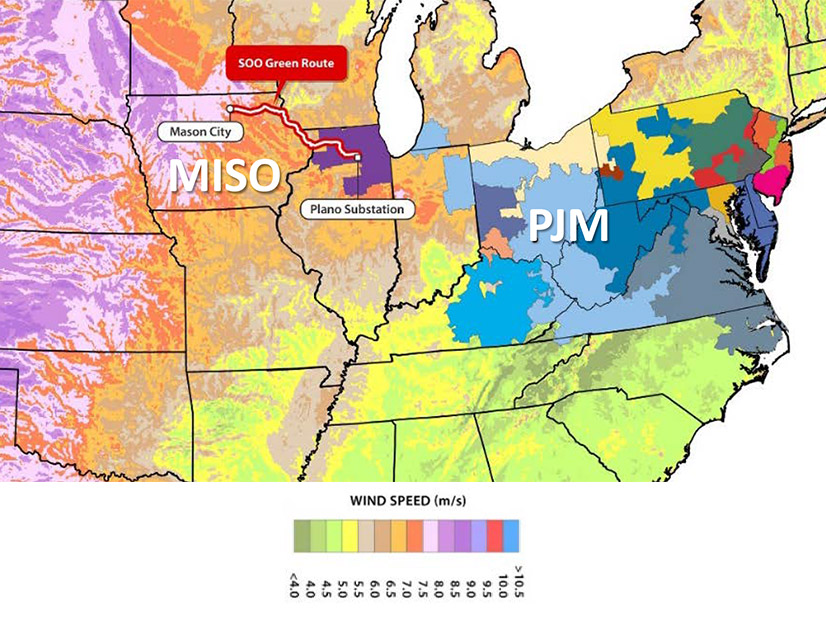The developer of a proposed 2,100-MW HVDC line escalated its fight with PJM on Tuesday, asking FERC to eliminate capacity rules it says are blocking its project from competing.
SOO Green HVDC Link ProjectCo, which seeks to deliver wind generation from MISO to the PJM market, asked the commission to prevent PJM from applying to its project rules on external capacity resources delivered over AC lines.
“Applying PJM’s external capacity rules to external resources importing capacity via controllable high-voltage direct-current transmission lines creates unjust and unreasonable barriers to entry for such resources and constraints on interregional trade without providing offsetting reliability benefits,” SOO Green said. It asked the commission to approve an alternative structure that it said would meet PJM’s reliability needs and align the RTO’s tariff with existing FERC-approved constructs for capacity imports via HVDC facilities in ISO-NE and NYISO.
“AC transmission flows are free-flowing, allowing power to flow along the path of least resistance, or impedance. In contrast, HVDC transmission facilities are fully controllable and can be directly dispatched: Power only flows on an HVDC transmission facility when operators dispatch the converter stations at either end of the line. This fundamental technological difference between AC and HVDC transmission — and the associated underlying operational distinctions — renders PJM’s external capacity rules unnecessary,” the complaint said.
PJM established capacity import limits to prevent excess congestion but exempted pseudo-tied generators over which it has direct dispatch control.
“PJM’s external capacity rules, while found reasonable for external resources flowing across the uncontrolled AC interface, were not designed for controllable interregional HVDC transmission facilities,” SOO Green said. “The commission recognized, at the time it approved the external capacity rules, the incompatibility between the external capacity rules and capacity imported over an HVDC line; however, it has not yet been clearly presented with the issue of external capacity imports via a controllable HVDC transmission facility in PJM until this filing.”
The developer said ISO-NE and NYISO have used controllable interregional HVDC transmission lines reliably for years. “Such lines can likewise satisfy PJM’s reliability and resource adequacy needs.”

SOO Green said PJM would not need to control individual external generators directly to manage power flows across the HVDC transmission facility. “Instead, PJM would issue dispatch instructions to the HVDC converter station — located within and directly connected to PJM — to schedule power flows,” it said. “Given PJM’s direct dispatch control of power flows across HVDC transmission facilities, PJM and MISO do not need to coordinate generator redispatch, as required for pseudo-tied generators delivering across the AC network, to manage congestion across their shared interface.”
SOO Green said an analysis conducted for it indicated that its project would also improve intraregional power transfer capability within MISO under normal operating conditions. “By reducing congestion, SOO Green will enable the reliable delivery of 2,100 MW of supply from multiple MISO subregions to the project’s interconnection point of withdrawal without requiring major interconnection upgrades,” it said.
Tuesday’s complaint opened a new chapter in SOO Green’s efforts since late 2019 to enter the PJM capacity market. In May 2020, PJM stakeholders approved the creation of the HVDC Senior Task Force at the developer’s request. But after four task force meetings from July to October 2020, SOO Green said it and the RTO had reached a “stalemate” because PJM staff were unwilling to consider alternatives to the pseudo-tie construct for external capacity resources delivered via HVDC.
In June, SOO Green filed a complaint alleging that PJM’s tariff and Operating Agreement are unjust and unreasonable because the RTO requires merchant transmission facilities to complete a “profoundly delayed generation interconnection process” for studies and integration into the grid (EL21-85). (See SOO Green Seeks Participation in PJM RTEP Process.) That complaint is still pending.
Asked for comment on the new complaint, PJM told RTO Insider that SOO Green “was afforded extensive opportunities to present its proposal to PJM and its stakeholders. PJM and many stakeholders noted the issues associated with the SOO Green proposal, which PJM will enumerate in its response.”




